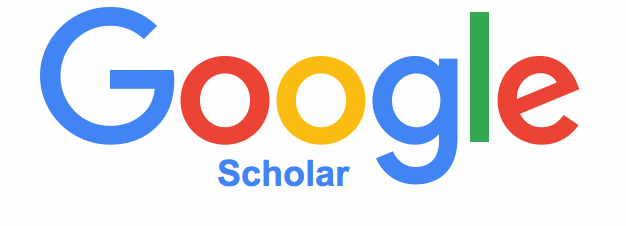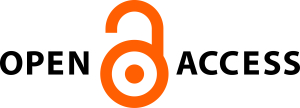Published By
Author Guidelines
Manuscript Preparation
Manuscript in MS Word format (generated from MS Word) must be submitted to Journal of Technomaterial Physics (JoTP) through the Online Submission System by accessing the JoTP portal (https://talenta.usu.ac.id/JoTP). The length of the manuscript is expected not to exceed 10 printed pages (1.5 line spacing) including abstract, figures, tables, and references. The abstract must describes the significant points of the manuscript containing the aims of the paper, methods, results, and conclusion, within 100-200 words. The authors should provide 5-10 keywords or phrases that characterize the manuscript. The manuscript is written in English and SI system (Syst me International d'Unit, often referred to as "International Units") for measurements and units. The manuscript as the section body is written with Times New Roman font size 11 pt with 1.5 (one and a half) line spacing between lines, 12 pt spacing among paragraphs, 24 pt spacing for the next heading, and on A4 paper (210 mm x 297 mm) with the upper margin of 1.75 cm, lower margin 1.55 cm, left and right 3 and 3 cm. The references should be numbered consecutively in the order of their appearance and should be complete, including authors initials, the title of the paper, the date, page numbers, and the name of the sponsoring society. Please compiles references as shown in the examples below. Adjust the size of figures and tables, so that all information in figures and tables can be legible. For all equations, use either Microsoft Equation Editor or MathType add-on. Equations are numbered consecutively in parenthesis, e.g. (1), and set at the right margin.
- The manuscript template in MS Word can be downloaded here.
--------------------------------------------------------------------------------------------------------------------------------------------------------------------
The Title of The Manuscript
The title of the article should be brief and clear as well as informative. It represents the content of the research article which will be discussed, where it does not contain any uncommon abbreviation. It should not exceed 12 words in English, 18pt-sized font, with the bold selection, Times New Roman, and capitalize each word of the title.
How to Write the Name and the Author Affiliation
The author name should be written without an academic degree. If the author name consists of at least two words, the last name should not be shorted (to avoid miss citation). If there is more than one author, the author names should be written separately by a comma (,). If the author names are only one word, it should be written as it is. The name of the author should be written in 13.5pt-sized font, with the bold and italic selection as well as the left text format. The style of the author's name has been provided in MS Word Style (J.Author).
The author's affiliation should be written by providing the name of the department, faculty and university. It is written in 10pt-sized font and italic selection. You can use the style of the author's affiliation which is provided in MS Word Style (J.Affiliation). The address written in the footer of the first page is the address of the author's affiliation by providing the street address, the postal code, the province, the city, and the country.
Abstract and Keywords
An abstract should stand alone, which means that no citation in the abstract. The abstract is like an advertisement that should tell the prospective reader what you did and highlight the key findings. Avoid using technical jargon and uncommon abbreviations. You must be accurate, brief, clear, and specific. Use words that reflect the precise meaning. The abstract should be precise and honest. Use 10pt-sized Times New Roman for the abstract body with single spacing and 10pt spacing for the next heading. The left indent is 2 cm and the right indent is 0 cm. Please follow word limitations (150,200 words).
Keywords are the labels of your manuscript and are critical to correct indexing and searching. Therefore the keywords should represent the content and highlight of your article. Use only those abbreviations that are firmly established in the field. Each keyword is written in 10pt-sized font and write alphabetically in 5-10 words and separated by a semicolon (;).
Introduction
Before the objective, authors should provide an adequate background, and a very short literature review (state of the art) in order to record the existing solutions/method, to show which is the best of previous research, to show the main limitation of the previous research, to show what do you hope to achieve (to solve the limitation) and to show the scientific merit or novelties of the paper. Avoid a detailed literature review (state of the art) or a summary of the results. Do not describe literature review (state of the art) as author by author, but should be presented as the group per method or topic reviewed which refers to some literature. Then, the authors should state the objectives of the work at the end of the introduction section.
Example of novelty statement or the gap analysis statement at the end of Introduction section (after state of the art of previous research survey): ........ (short summary of background)....... A few researchers focused on ....... There have been limited studies concerned on ........ Therefore, this research intends to ................. The objectives of this research are ..........
Research Method
The research method describes the stages of research/development undertaken to achieve the objectives/outputs of research. Each stage is briefly described (eg each step in a paragraph). Also inform the materials/platforms used in the study, including the subjects/materials, the tools/software used, the design or experiment used, the sampling technique, the test plan (the variable to be measured and the data retrieval technique), analysis and statistical model used. Provide enough detail to allow the work to be reproduced. The published method should be indicated by a reference: only relevant modifications should be explained. Do not repeat details of existing methods, just refer to the literature.
Results and Discussion
This part consists of the research results and how they are discussed clearly. The results obtained from the research have to be supported by sufficient data. The research results and the discovery must be the answers or the research hypothesis stated previously in the introduction part. Please highlight differences between your results or findings and the previous publications by other researchers. The discussion should explore the significance of the results of the work, not repeat them.
The following components should be covered in discussion: How do your results relate to the original question or objectives outlined in the Introduction section (what/how)? Do you provide an interpretation scientifically for each of your results or findings presented (why)? Are your results consistent with what other investigators have reported (what else)? Or are there any differences?
Conclusion and Future Research
The conclusions will be the answers to the hypothesis, the research purposes, and the research discoveries. Tells how your work advances the field from the present state of knowledge. Without clear Conclusions, reviewers and readers will find it difficult to judge the work, and whether or not it merits publication in the journal. Do not repeat the Abstract, or just list experimental results. You should also suggest future experiments and/or point out those that are underway.
Acknowledgments (Optional)
Recognize those who helped in the research, especially funding supporters of your research. Include individuals who have assisted you in your study: Advisors, Financial supporters, or may another supporter, i.e. Proofreaders, Typists, and Suppliers, who may have given materials. Do not acknowledge one of the authors' names.
References
All references referred to in the article text must be listed in the References section. The references shall contain at least 10 (ten) references from 80% of primary sources (scientific journals, conference proceedings, research reference books) which are published within 5 (five) years.
References should be written in accordance with the IEEE citation style. They must be listed in the order they appear in the text and numbered using Arabic numerals in square brackets [1]. Citations are numbered consecutively within brackets [2], and sentence punctuation should follow the bracket [3]. Within the text, refer only to the bracketed number, such as [4]; do not use expressions like "Ref. [4]" or "reference [4]", except at the beginning of a sentence—for example: "Reference [4] discusses..."
Examples
- Internet Document
[#] A. Author, "Document title," Webpage name, Source/production information, Date of internet publication. [Format]. Available: internet address. [Accessed: Date of access].
Electronic document
- European Telecommunications Standards Institute, “Digital Video Broadcasting (DVB): Implementation guidelines for DVB terrestrial services; transmission aspects,” European Telecommunications Standards Institute, ETSI TR-101-190, 1997. [Online]. Available: http://www.etsi.org. [Accessed: Aug. 17, 1998].
Electronic document: no author
- “A ‘layman’s’ explanation of Ultra Narrow Band technology,” Oct. 3, 2003. [Online]. Available: http://www.vmsk.org/Layman.pdf. [Accessed: Dec. 3, 2003].
Government publication: Australian Bureau of Statistics document
- Australian Bureau of Statistics, Engineering Construction Activity (cat. no. 8762.0). Canberra: ABS, 2010. [Online]. Available from AusStats, http://www.abs.gov.au/ausstats. [Accessed: Sept. 7, 2010].
Government publication: Government department
- Department of of Education, Employment and Workplace Relations, Survey on Changes in Awareness and Understanding of Science, Engineering and Technology: Report on findings. Canberra: The Department; 2008. [Online]. Available: http://www.dest.gov.au/NR/rdonlyres/241263CF-8585-4EEC-B104-C947C6C18029/23713/SurveyonChangesinawarenessunderstandingofSET
.pdf. [Accessed: Sept. 7, 2010].
Personal Internet site
- Sussman, "Home page - Dr. Gerald Sussman," July 2002. [Online]. Available: http://www.comm.pdx.edu/faculty/Sussman/sussmanpage.htm. [Accessed: Sept. 12, 2004].
General Internet site
- Geralds, "Sega Ends Production of Dreamcast," vnunet.com, para. 2, Jan. 31, 2001. [Online]. Available: http://nl1.vnunet.com/news/1116995. [Accessed: Sept. 12, 2004].
Blog entry
- A. Specavek, "Fracking and the Stresses it Adds to Railroads," It's the Rheo Thing, May 18, 2015. [Online]. Available: http://www.rheothing.com/2015/05/fracking-and-stress-adds-to-railroads.html. [Accessed: Jun. 9, 2015].
- Journal Article
[#] A. A. Author of article. "Title of article," Title of Journal, vol. #, no. #, pp. page number/s, Month year.
- Thompson, “Women and feminism in technical communication,” Journal of Business and Technical Communication,vol. 13, no. 2, pp.154–178. 1999.
- Smith, “Paper Title” (to be published).
- Electronic Publication, Information from the internet
- Weiss, Instruction to Authors, Elsevier Publishing,
http://www.elsevier.com/authors.html, 1999, retrieved May 13, 2010.
- Electronic books
[#] A. Author, Title of E-book. Place: Publisher, Date of original publication. [Format] Available: Source.
- Bass, P. Clements, and R. Kazman, Software Architecture in Practice, 2nd ed. Reading, MA: Addison Wesley, 2003. [Online] Available: Safari e-book.
- Eckes, The Developmental Social Psychology of Gender. Mahwah NJ: Lawrence Erlbaum, 2000. [Online] Available: netLibrary e-book.
- Chapter from an electronic book
- Kawecki, "Fuel preparation," in Combustion Engineering Issues for Solid Fuel Systems, B.G. Miller and D.A. Tillman, Eds. Boston, MA: Academic Press, 2008, 199-240. [Online] Available: ScienceDirect.
- Article from an electronic reference book
- Ince, "Acoustic coupler," in A Dictionary of the Internet. Oxford: Oxford University Press, 2001. [Online]. Available: Oxford Reference Online.
- D. Nance, "Management information system," in The Blackwell Encyclopedic Dictionary of Management Information Systems, G.B. Davis, Ed. Malden MA: Blackwell, 1999, pp. 138-144. [Online]. Available: NetLibrary e-book.
- Article from an electronic encyclopaedia
- S. Thompson and M. P. Harmer, "Nanoscale ceramic composites," in Encyclopedia of Materials: Science and Technology, K. H. J. Buschow, R. W. Cahn, M. C. Flemings, B. Ilschner, E.J. Kramer, S. Mahajan, and P. Veyssière, Eds. Amsterdam: Elsevier, 2001, pp. 5927-5930. [Online]. Available: ScienceDirect.
- Article from an electronic dictionary: No author
- "Zenith telescope," in A Dictionary of Astronomy, 2nd ed. Oxford (UK): Oxford University Press; 2007. [Online]. Available from: Oxford Reference Online.
- Conference Paper in Print Proceedings
[#] A. Author of Paper and B. Author of Paper, "Title of paper," in Title of Published Proceedings: Proceedings of the Title of Conf.: Subtitle of conference, Month Date, Year, Location, A. Editor and B. Editor, Eds. Place of publication: Publisher, Year. pp. inclusive page numbers.
- Liu and H. Miao, "A specification based approach to testing polymorphic attributes," in Formal Methods and Software Engineering: Proc.of the 6th Int. Conf. on Formal Engineering Methods, ICFEM 2004, Seattle, WA, USA, November 8-12, 2004, J. Davies, W. Schulte, M. Barnett, Eds. Berlin: Springer, 2004. pp. 306-19.
- Christensen and F. Oppacher, "An analysis of Koza's computational effort statistic for genetic programming," in Genetic programming: EuroGP 2002: Proc. of the 5th Euro.Conf. on Genetic Programming, April 3-5, 2002, Kinsdale, Ireland, J. A. Foster, E. Lutton, J. Miller, C. Ryan, A. G. Tettamanzi, Eds. Berlin: Springer, 2002. pp. 182-91.
- Conference Paper from the Internet
[#] A. Author of Paper and B. Author of Paper, "Title of paper," in Proceedings of the Title of Conf.: Subtitle of conference, Month Date, Year, Location [Format]. Place of publication: Publisher, Year. Available: Database Name (if appropriate), internet address. [Accessed: date of access].
- Lach, "SBFS: Steganography based file system," in Proc. of the 2008 1st Int. Conf. on Information Technology, IT 2008, 19-21 May 2008, Gdansk, Poland [Online]. Available: IEEE Xplore, http://www.ieee.org. [Accessed: 10 Sept. 2010].
- Unpublished Conference Paper
- A. Nimr, "Defuzzification of the outputs of fuzzy controllers," presented at 5th Int. Conf. on Fuzzy Systems, 1996, Cairo, Egypt. 1996.
- Conference Proceedings
[#] A. Editor and B. Editor, Eds., Title of Conf.: Subtitle of conference, Month Date, Year, Location (optional). Place of publication: Name of Publisher, Year.
- J. van Weert and R. K. Munro, Eds., Informatics and the Digital Society: Social, ethical and cognitive issues: IFIP TC3/WG3.1&3.2 Open Conf. on Social, Ethical and Cognitive Issues of Informatics and ICT, July 22-26, 2002, Dortmund, Germany. Boston: Kluwer Academic, 2003.
- H. Perry, F. Lu, F. Namavar, N.M. Kalkhoran, & R.A. Soref, “Paper Title” In Proceeding of ICACSIS 2011, pp. 456-541, 2010.
- Monograph, edited book, book
- J. Carr, C.E. Lymar, & J.M. Cowley, In: J.M. Cowley (Ed.), Electron Diffraction Technique, vol. 1, International Union of Crystallography/Oxford University Press, New York, p.122, 1999.
- J. Adams, B.J. Briscoe, & S.K. Sinha, In: D. Dowson, C.M. Taylor, T.H.C. Childs, M. Godet, G. Dalmas (Eds.), Dissipative Processes in Tribology, Tribology Series, vol. 27, Elsevier, Amsterdam, p.223, 1994.
- Palik (Ed.), Handbook of Optical Constants of Solids II, 3rd ed., Academic Press, New York, p.151, 1991.
- Theses, Dissertation
Thesis in print: Unpublished
- Zhang, "Delay-insensitive networks," M.S. thesis, Univ. of Waterloo, Waterloo, ON, Canada, 1997.
- W. Dixon, "Application of neural networks to solve the routing problem in communication networks," Ph.D. dissertation, Murdoch Univ., Murdoch, WA, Australia, 1999
Thesis in print: Published
- Lehmann, Data Access in Workflow Management Systems. Berlin: Aka, 2006.
Thesis from a full text database
- Sudweeks, Development and Leadership in Computer-Mediated Collaborative Groups. PhD [Dissertation].Murdoch, WA: Murdoch Univ., 2007. [Online]. Available: Australasian Digital Theses Program.
- Patent
- Yamagishi, A. Hiroe, H. Nishio, K. Miki, K. Tsuge, & Y. Tawada, U.S. Patent No. 5264710, 23 Nov. 1993.
- Papers and Industrial Reports
- Cleveland, Spring Constant Update, Digital Instruments, Santa Barbara, 1996 [if a website address available, it could be included in italic].
- D. Nicholson, International Structures In Nickelbased Transition Joints After Long Term Service, Report RD/M/N1131, Central Electricity Generating Board, Marchwood, 1980.
- Special data (if written by a team or anonymously)
- Joint Committee on Powder Diffraction Standards, Powder Diffraction File, ASTM, Philadelphia, Card 4301027, 1967.
- Anon, 19-th Annual Book of ASTM Standards Part 17, ASTM, Philadelphia, p.636, 1969.
- Unpublished reports (refered only if necessary)
- Stumpf, X. Gonze, & M. Scheffler, Fritz-Haber Institute Research Report, 1990, unpublished.
- H. Smith, Physics Department, Chicago University, Chicago, U.S.A., private communication, 1986.
Please note that JOTP uses a rolling publication model, where articles are published as soon as they are ready and assigned to the current issue until it is finalized.







